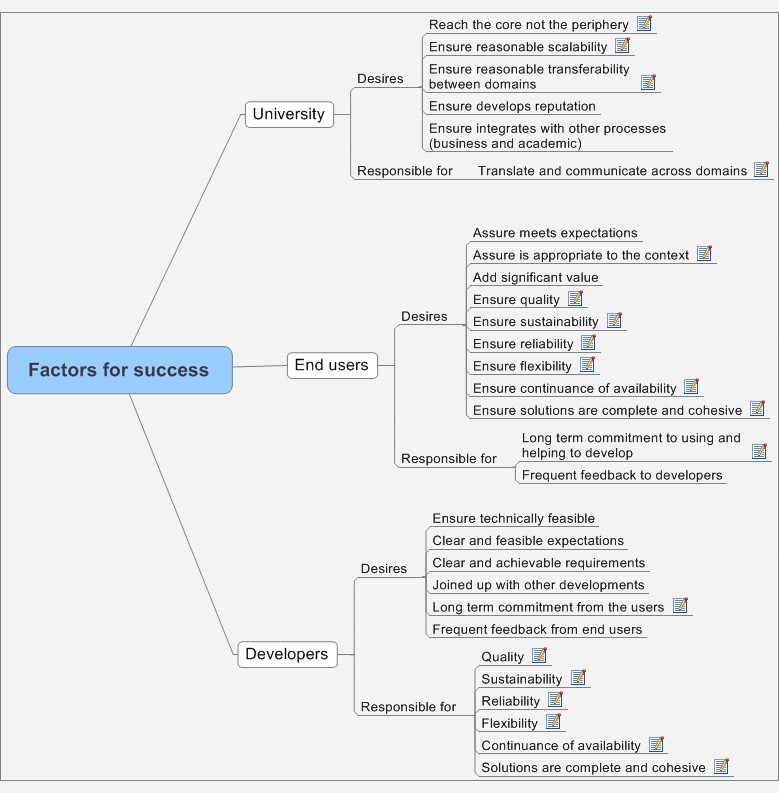In response to an article in the Daily Telegraph which questions the value of arts degrees. I consider the effects of tuition fees, placing Warwick in a very different undergraduate market. I then consider the role of technology in developing a valuable, attractive and differentiated undergraduate offering.
It is unusual to see full-frontal nudity in the pages of the Daily Telegraph. Even more shocking that the model in view should be a dear old friend. Unfortunately, this Monday (17–04-06 – abbreviated online version available), there seemed good reason to laugh at the indelicately exposed flesh of that alleged emperor of the education world: the British Arts Degree. The claimed justification for this sudden revelation? They want to charge £3000 a year for the privilege. The ever to be trusted investigative methods of the Telegraph hacks are ringing the first of what will be many alarm bells. They are asking: £3000 for what? Six hours of lectures and seminars a week for someone studying History at York. Outrage. Eight hours a week and you get a psychology degree from Bristol. Even the old Freudster couldn’t have dreamt up that one.
The story was all too superficial, but let us put that aside for a moment and consider the implications of the article’s underlying perception for Warwick. Then it will be possible to consider what this may mean for e-learning.
Firstly, I am a new father, already contemplating university fees eighteen years from now (I am absurdly long sighted). The effects of tuition fees on my considerations are: for that kind of money my son could go anywhere. That is certainly not true, I imagine that a good American education is significantly more expensive. But I have the modern British attitude to debt: when I pay out sufficiently large sums of money I deliberately avoid thinking about the number of zeros on the end of the sum. I’m more inclined to dream about the magnificent product that I am buying. The consequence of this deliberate blindness to the level of my personal debt is that I do not notice whether I am spending £3000 or £10000. For evidence, consider my mortgage, a staggering and entirely unreasonable amount of money. Therefore, if I have to pay out lots of cash for my son’s education, I will go for the best available, or at least as much as my credit limit can handle. And if that also means he gets to go abroad, somewhere nice for me to visit, why not? Perhaps what will happen over the longer term is that the portion of an individual’s debt available for house-buying will decrease, whilst the portion to be spent on education will increase. A £20,000 decrease in money available for the mortgage is quite insignificant. Moving that £20,000 into the education debt would make a very big difference. Even so, America may still seem just too expensive, but then there are plenty of alternatives. Australia for example is a dream for many young people in Britain, and they do actually have some decent universities. Perhaps we should set up a campus in the Pacific? In any case, now that I am a consumer of higher education, with money (or rather debt) to spend, I feel more financially empowered than I was as an undergraduate in 1991 having my fees and rent paid for me. That empowerment makes me think: what cool things can I get for my money? Expect to see the appearance of a magazine title just for people like me: Which University?
The implication of tuition fees for Warwick? Undergraduate degrees are now placed into a complex and global market. After years of trying to stay ahead of the other First Division Russell Group universities, with a distant hope of promotion to the Premier League, the game will suddenly change altogether. At the very least the range of feasible and thinkable options available to the school leaver will grow (despite the current number of institutions, there are still very few genuinely different options for the aspiring middle class kid). Competition between the providers will increase. The need to differentiate the product will become pressing (already noticeable in the proposed new Warwick Learning and Teaching Strategy, which seeks to differentiate us as thoroughly “innovative”). The market (or at least its self-appointed guardians, including the Telegraph) will seek out variables of comparison between the products on offer. For example, it is possible to compare the amount of “contact time” (lectures, seminars etc) that a student gets for their £3000 at the various institutions. The Telegraph have done just that. Expect a league table of contact time to be published very soon.
Students and their parents have always had their own methods for comparing universities and making choices. At the first stage of consideration the decision is made for them: which of the various leagues are they in: Oxbridge? Red-brick? Polytechnic? A small minority of students will then base their choice on the specific details of the courses on offer. Students with minority interests (theology, anthropology) will have little choice. For the majority of students, the next most significant consideration is lifestyle. Campus or town based? By the sea? Big City? Near to home or far away? Lively Student’s Union? Nightclubs? Girl-to-boy ratio? The choice has always been taken lightly in academic terms but with huge significance in the social aspect. Perhaps this will remain the case. The current orthodoxy claims that the typical undergraduate wants a degree course that simply offers them the required sheet of paper bearing the figure “2.1” along with three years of fun and “personal development”. In this case the terms of the competition are simple: which university can guarantee the 2.1 whilst offering the best social experience? I contend that Warwick may well lose out to Sydney in the second of these variables. For now the guarantee of a safe degree result may override this. But as the members of this globally scoped market wake up to the new competition, they may well all start to focus their energies on the guarantee of reasonable academic success. In which case who wins? Sunny Sydney with its glorious beaches and bronzed bodies? Coventry? Expect to see the Which University? guide looking ever more like a holiday brochure.
Some will of course dissent from this trend. Perhaps in eighteen years time my son will realise that he is to be expelled from the family home and packed off like a convict to the land of Oz. I will seek at every opportunity to instil him with a sense of adventure, but should that fail, he may oppose my plans by opting to join the thousands of young people who simply choose not to go away to university (he can stay, but will have to live in the garage). The Open University is increasingly popular, as are the many smaller more local universities offering easier and more certain access. This is in many cases a rational choice, not just for economic reasons. Many students simply cannot cope, at 18, with leaving home. The OU may be the best thing for them (note, I came to Warwick at the age of 20). Expect the appearance of a league table of drop-out rates and mental health problems to be published very soon, as the consumers wise up to this being an important consideration.
The traditional market for universities like Warwick would then be significantly eroded in two directions, with some students globalising, whilst others become even more sedentary. In either case Warwick seems to lose its footing. We can attempt to combat this with glossy brochures and friendly open days, but as competition becomes more intense, and the market more discerning, the bottom-line story will come under closer scrutiny and really must hold up effectively. And all the time every other fish in the pond will offer a pretty picture of nice residences and a lively social life. Such things cease to be a differentiator and instead become commodified.
These trends will no doubt be the certain outcome if consumer attitudes remain as present. But the Telegraph article may indicate (or be leading) a significant shift. At least a large sub set of consumers will start to behave more intelligently, with a detailed appreciation of what makes the difference between institutions and their offerings. Expect, at least in the short term, a rise in the number of courses that combine the safety of a traditional UK institution with more exotic destinations abroad (these are already a big part of the Arts at Warwick). Also expect to see prospective students seeking clarification and verification of claims by British universities that they offer a special kind of educational experience, somehow resulting in superior graduates. What exactly is it about a degree at a certain institution that makes it worth the money more than any other? This is the real drive behind the Telegraph article.
The obvious claim is that limited contact hours equal poor quality education, and vice versa. This is countered with the notion that arts students benefit greatly from even a small quantity of high quality contact with top experts, whilst developing independent skills of their own: so called “research based learning”. This is in many cases the “exactly” of “what makes a specific degree better”. I have heard this argument at Warwick, and indeed have on occasion used it myself. Unfortunately as a differentiator and mark of quality, this concept has become dramatically devalued and will not stand up to the kind of scrutiny applied by the Telegraph. Professor Anthony King of Essex University knows this to be the case. He makes the obvious point that 18 year old students do not have the required skills to operate as independent researchers. Expect to see as a consequence universities differentiating themselves through well worked out, consistent and clearly branded undergraduate induction and skills programmes. Warwick MUST do this to keep competitive as an undergraduate provider. However, such curriculum developments are expensive. And the question of who bears the cost has to be settled. It may be born by agencies external to the subject specialist academics, by for example a central undergraduate skills programme separate from academic departments. However, we then risk the dilution of the degree programme away from subject specialism and academic expertise, precisely the things that we claim give its special value. At the other extreme, the cost of curriculum development would fall upon the subject specialist academic. This would be a difficult choice at a time at which increasing pressure is being placed upon such academics to produce high quality work to be evaluated by the Research Assessment Exercise. It may be that research academics simply cannot do the extra work of redeveloping the curriculum at this time.
The immediate quandary facing Warwick, given the changing market conditions, is then how can it differentiate its undergraduate offerings with some special characteristic, such that its claims:
- are significantly attractive to prospective students within a global market;
- represent value for money;
- can be understood by prospective undergraduates (and the media that tells them what matters) without too much effort;
- do not add an unbearable overhead to existing resources (academics);
- can be maintained as a distinct advantage over the competition for a significant length of time.
By definition, there is no simple solution. If points 1 to 4 were easily achievable, then every one of our competitors would achieve them right away, leaving us with no advantage: we would fail on point 5. As always, any solution to the problem of successful differentiation in competition requires a blend of strategies that:
- meet the popular demands and expectations of the market;
- do so in some uniquely special and un-commodifiable way;
- reduce cost whilst bringing new value to all participating agents.
At this point the common reaction is to reach for a copy of the Oxford Dictionary of Techno Wizardry. Look under E for E-learning perhaps. But don’t get too excited. There are some possibilities, but we will not find a panacea. Technical solutions can only be part of the answer to the kind of problems that I have outlined. For example, we could create an online induction course that requires no input from academic staff. However, if it worked really well and delivered valuable education, it would not be delivering an education valuable in a way specific to Warwick and its academia. In fact it would soon become commodified, copied by every other university. Technical solutions always imply that we must keep innovating and improving, as they are easily copied by the opposition. The best solution is to pair the technical solution with something else that cannot be copied by another university. Something unique and situated in the culture and community of the place, which must itself develop to meet the new challenges alongside the introduction of new technologies.
At this point I should make clear exactly what I am not advocating, for e-learning already has a bad name from the wrong kind of coupling of technological and cultural change. Many within education and beyond have sought to force change through technological development. This however very rarely works, unless you have the power to force everyone to use the new technology. Unfortunately, this tactic is usually the last resort of institutions who do not have that kind of power. Paradoxically, they hope to attain this authority surreptitiously through the introduction of technology, which of course relies on having such a degree of power (the strategy thus collapses into circularity). For example, the rapidly fading generation of Virtual Learning Environments (Blackboard, WebCT, Learnwise) have been adopted by some institutions as a means of introducing quality assurance frameworks by stealth. The idea being that the VLE “encourages” lecturers to document their teaching activities and to record the work of their students in an online location easily accessible to university authorities. Administrators would then be able to drill-down into institutions to examine every detail of what is going on, without even leaving their desks. Of course no British university has either the power or the will to force academics to cooperate. Consequently there are a lot of very empty VLEs out there.
Instead, we require a different kind of technology strategy, one that takes the best aspects of the unique community and culture of the university, and supports, enhances and extends them to provide a significantly different and more valuable undergraduate experience. Importantly, this cannot be done in isolation from development in the practices of the people involved in teaching undergraduates, as they are the key source of value. So we could see the introduction of a superb new technical tool for supporting undergraduate learning, for example a blog system, but that must be connected to and validated by the involvement of the specialist academics that are Warwick’s special value. Currently the Warwick Blogs system does give us a small advantage over our competitors in the overall undergraduate provision, but it is not in any way rooted in the academic specialism and culture that makes Warwick unique. It is potentially comodifiable. Expect to see Oxford Blogs, Cambridge Blogs and so on at some point soon. The next difficult question, one that I do not yet have sufficient answers for, is how we develop our e-learning provisions so as to stimulate the required cultural development within the university. I have a strategy, but not yet the required tactics. Any suggestions?
 Robert O'Toole
Robert O'Toole

 Please wait - comments are loading
Please wait - comments are loading











